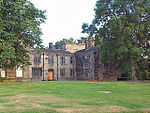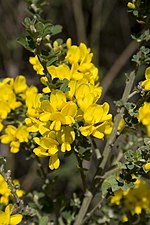East Bowling

East Bowling is an area of Bradford, West Yorkshire, England located to the south of Bradford city centre. It forms the eastern half of the historic township and manor of Bowling. Bowling became a ward of the newly created Borough of Bradford in 1847. In 1882 the ward was split into the wards of East and West Bowling. In the north the boundary was along the Lancashire and Yorkshire Railway. To the south it was along Hall Lane and Bolling Hall Lane. The southern/southeastern boundary follows Rooley Lane and Sticker Lane. The northern boundary follows Bowling Back Lane. East Bowling forms a roughly triangular area with its southern apex near Croft Street about 350m from the city centre. Wakefield Road is its main thoroughfare. East Bowling is now a part of the Bowling and Barkerend ward
Excerpt from the Wikipedia article East Bowling (License: CC BY-SA 3.0, Authors, Images).East Bowling
Parkside Road, Bradford West Bowling
Geographical coordinates (GPS) Address Nearby Places Show on map
Geographical coordinates (GPS)
| Latitude | Longitude |
|---|---|
| N 53.776388888889 ° | E -1.74 ° |
Address
Bowling Park Crown Green Bowls Club
Parkside Road
BD5 8PW Bradford, West Bowling
England, United Kingdom
Open on Google Maps









